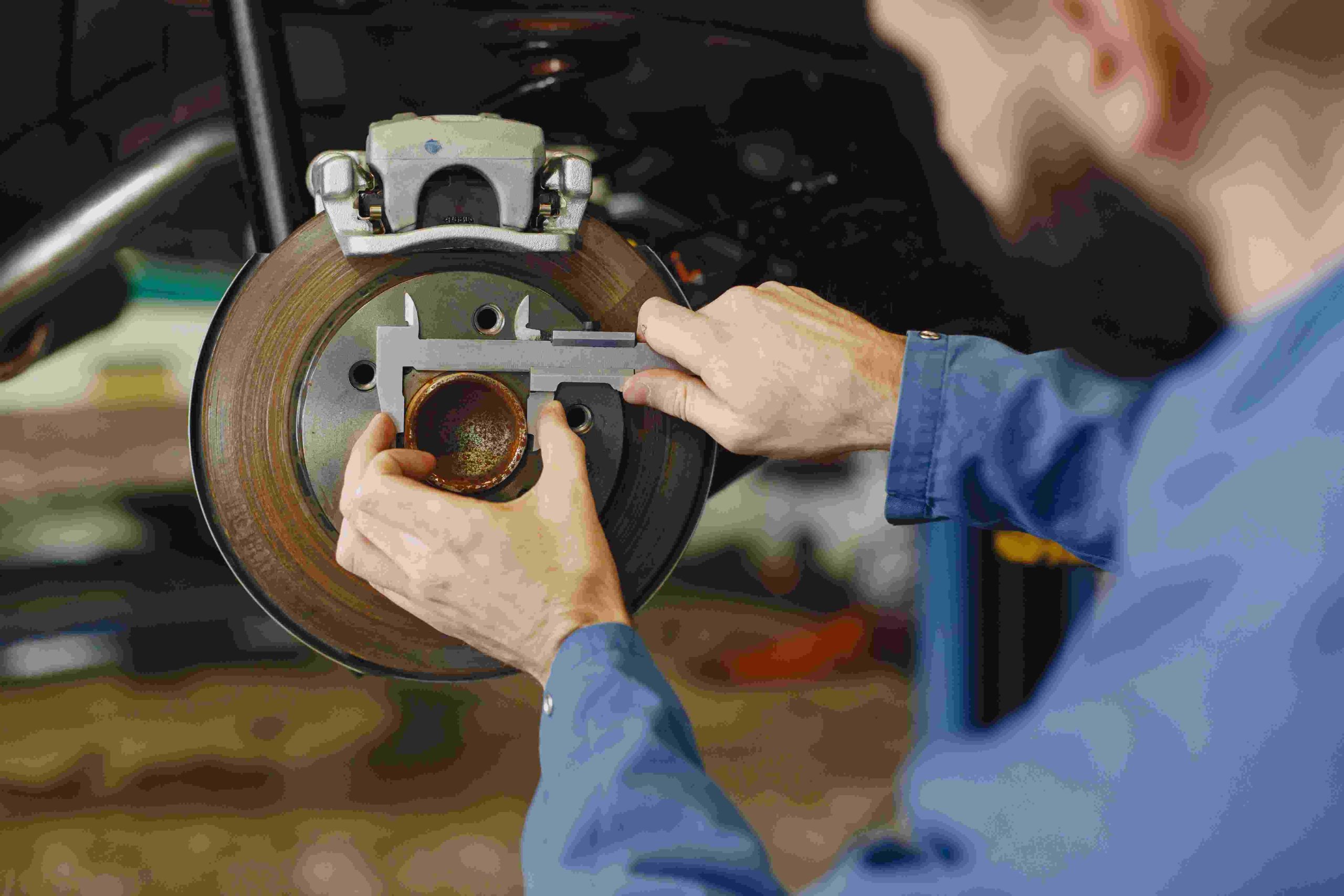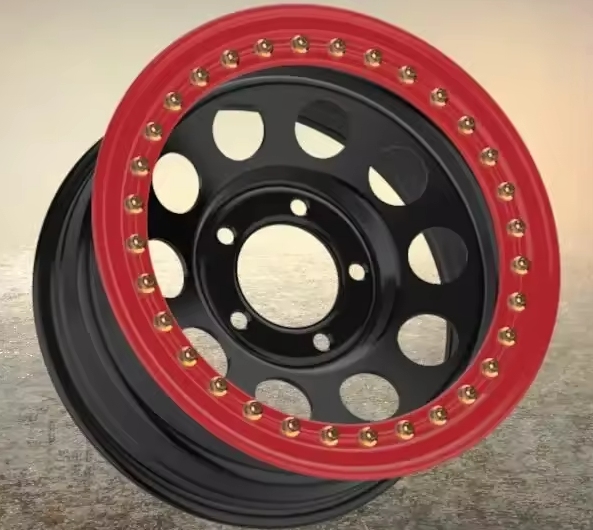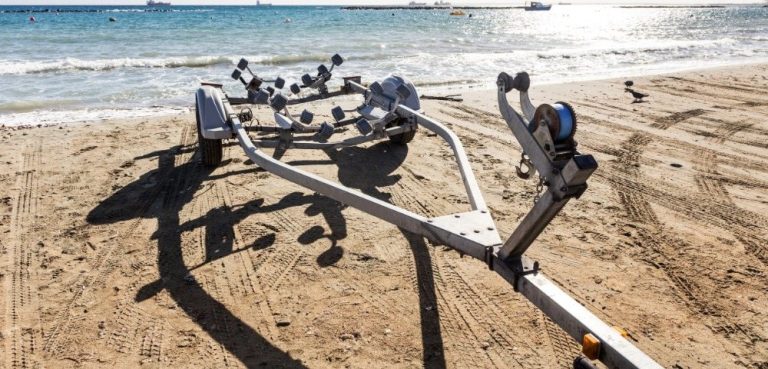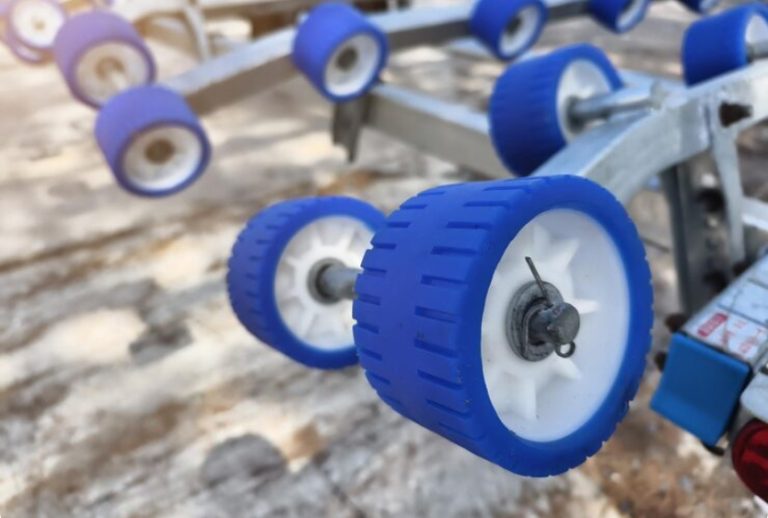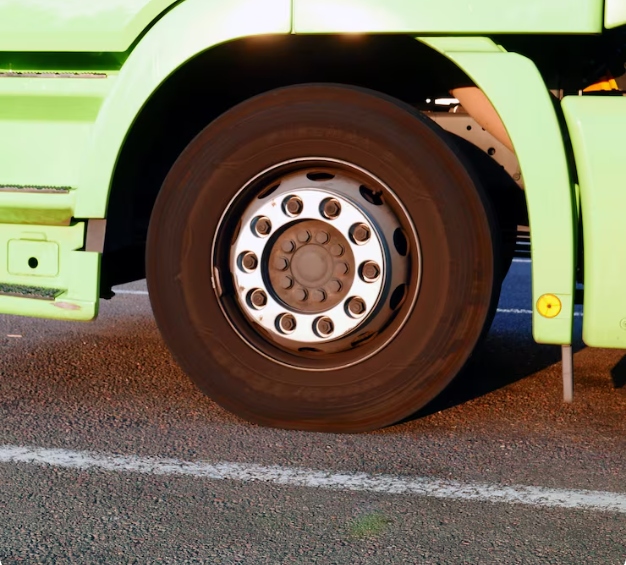Do you hear a grinding noise from your trailer wheels? Do you feel a one-sided pull when you brake? These could be signs of a seized brake caliper—a potentially hazardous situation that compromises your towing safety. Don’t worry, you don’t always have to call in a technician to come and look at what’s happened. We’ll guide you through how to check your trailer’s محور القرص caliper yourself, safely and efficiently.
5 Telling Signs of a Seized Brake Caliper
Seized calipers can sabotage your entire braking system. These are the telling signs you should watch out for:
Vehicle Pulls to One Side
When a caliper is frozen shut, it will be pressing on one wheel at all times. This causes your trailer (and most frequently your entire tow vehicle) to pull forcefully to that side when you brake.
Odd Sounds (Squealing or Grinding)
A seized caliper causes the brake pads to contact the rotor continuously. This creates an ongoing grinding, scraping, or metal-on-metal shriek that gets louder with time.
Smokey Odor From the Wheel
Excess heat is created by continuous friction. You can notice a strong, smoky odor coming from one wheel after driving, and it is a definite indication that the brake assembly is overheated due to a seized caliper.
Uneven Brake Pad Wear
In case, during the visual inspection, you see that the inner pad is a lot more worn than the outer pad (or vice versa), then the caliper is not sliding properly and is gripping unevenly.
Soft or Spongy Brake Pedal
When one side of your braking system is not functioning, it will create an imbalance. You will find a soft, spongy, or uneven brake pedal sensation in your tow vehicle, reducing your stopping power and control.
Tools Required for Inspection
Have these tools available before starting so you can conduct the inspection safely and effectively:
| Basic Hand Tools | Safety & Lifting Equipment |
| Socket & Wrench Set | Safety Gloves & Goggles |
| مفكات | Wheel Chocks |
| Rubber Mallet | Jack & Jack Stands (e.g., our 1200lb capacity Trailer Jack Stands) |
| Brake Cleaner Spray | GO Trailer Brake Parts (for replacement, if needed) |
Step-by-Step Trailer Caliper Inspection Guide
To diagnose a seized caliper at home safely, follow the steps below.
1. Safely Lift and Secure Your Trailer
- Park on solid, level ground and set your parking brake.
- Position wheel chocks firmly against the tires to remain stationary on the ground.
- Using a good jack, lift the trailer so that the suspect wheel is not touching the ground.
- Position a jack standunder a solid frame point to provide support. Under no circumstances should the jack be used alone.
2. Take Off the Wheel
- Loosen lug nuts with the wheel on the ground for more leverage.
- Remove the lug nuts after raising the lug trailer and take out the wheel to access the brake assembly.
3. Visually Check for Damage and Rust
- Check the caliper itself for excessive damage or rust.
- Check the rubber boot that covers the piston(s) for cracks, tears, or leaks.
- Check the slide pins for excessive corrosion or heavy grime accumulation.
4. Check the Wear Pattern of the Brake Pad
- Peer into the caliper at the brake pads. Do they still have a lot of material remaining?
- Compare the outer pad’s wear to the inner pad’s wear. Asymmetrical wear is one of the major signs that the caliper is not sliding freely on its slides.
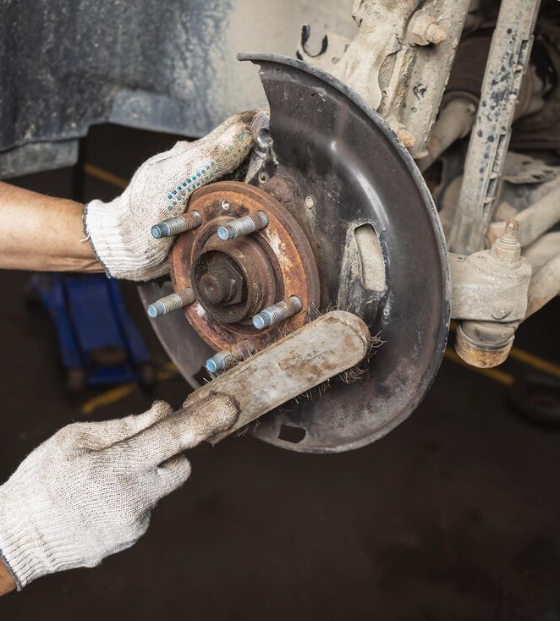
5. Check the Caliper Movement
For floating calipers: Put on your gloves and try to rock the caliper body from side to side on its mounting bracket. It should rock smoothly. If stuck or needs excessive pressure, the slide pins are frozen. You can also try pushing the caliper piston itself back into its bore using a C-clamp or a large screwdriver.
Note: If the piston is extremely difficult to push back, the caliper itself has internally seized.
What Freezes a Caliper?
Knowing why prevents future issues.
- Rust and Corrosion: Road salt, water, and dirt can rust the piston and slide pins, which will eventually lock them solid in position.
- Worn or Bent Slide Pins: These pins allow the caliper to float. When they get bent or lose lubrication, they freeze and bind.
- Contaminated Brake Fluid: Brake fluid contaminated with water or old brake fluid can cause inner caliper bore corrosion, causing the piston to stick.
Preventing Future Caliper Failures
- Maintenance on a Regular Schedule: When doing tire rotations or seasonal service, clean the brake assembly periodically with brake cleaner and inspect for wear.
- Proper Lubrication: Apply a synthetic high-temperature brake grease to contact points and caliper slide pins during servicing. Never apply petroleum-based grease, which will break down rubber components.
- Quality Parts: Installing long-wearing, corrosion-resistant parts in the first place keeps your entire braking system in service longer.
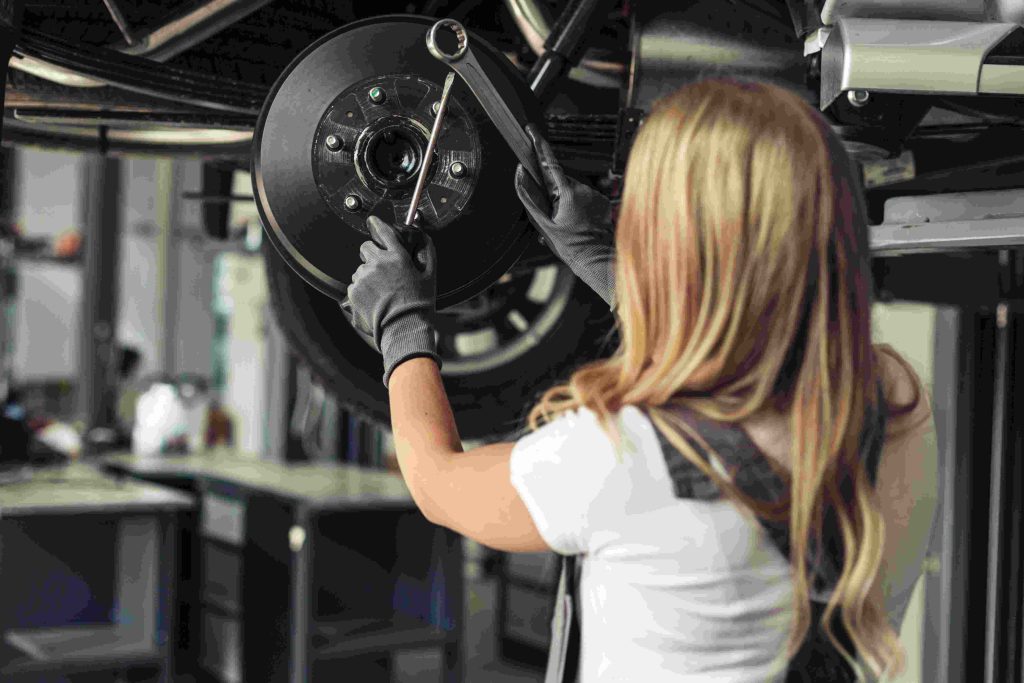
When to Replace Instead of Repair
- Repair is not always enough. Replace your caliper when:
- The piston is severely corroded and will not retract even after cleaning.
- The slide pins are welded or bent to bushings.
- The caliper body is cracked or battered.
- You still experience recurring seizure issues shortly after service.
Why Choose GO Trailer Replacement Parts?
- When your inspection reveals you require a new caliper or hub assembly, use parts that will last the long haul. اذهب مقطورةoffers precision-engineered brake parts designed to last.
- Precision Fit: Our components are CNC-machined for a precision fit each time, ensuring smooth installation and hassle-free operation.
- Built to Last: We only use quality materials and coatings that can withstand corrosion and wear.
- Complete Solutions: From only the brake caliper to a complete Disc Hub Assembly with rotor and bearings, we’ve got you covered.
FAQ
Q: Can I field test my own disc hub at home shop?
A: Sure thing! With minimal equipment like wrenches and jacks (like our Trailer Jack Stand with Bracket) and a quick rust/pad wear check, most issues will be caught early without your having to do it yourself.
Q: Do I have to replace both hub AND caliper?
A: Not always. If your piston has failed, but rotors/pads are fine, you may manage with a new caliper only. If rotors are scored or discs are warped, however, replace them both with our Disc Hub Assemblies for maximum performance.
Q: Will GO Trailer components fit my existing setup?
A: Probably! We are offering custom size/surface treatment across all the major categories, including axles & hubs. Customization options offered are Size, package, and surface treatment. Please let us know by calling us (+86 0532 68976869) or sending emails (admin@gotrailerpart.com) for custom service.


